Michigan Planners’ Traverse City Offices Are Moving!
September 29, 2025Understanding the Challenge: Why Double Rate Increases Are Happening
If you are staring at a double-digit renewal increase this season, you are not alone. Employers across Michigan and the country are facing premium hikes that go far beyond what is typical. For HR directors, CFOs, and business owners, it can feel less like planning and more like damage control.
So, what is driving these increases?
- Inflation and Rising Healthcare Costs - Healthcare costs are increasing at nearly twice the pace of general inflation. From prescription drugs to hospital services, providers are passing rising costs to insurers, who in turn pass them to employers.
- Utilization Spikes and Post-Pandemic Claims - Many employees delayed care during the pandemic. Now, they’re catching up, often with higher-cost procedures. This surge in utilization has driven claims higher than projections.
- Regulatory and Compliance Pressures - State and federal mandates, from coverage minimums to compliance reporting, add another layer of cost employers simply cannot avoid.
If you would like to take a deeper dive into the driving factors behind these increases, watch our webinar hosted by Aaron MacDonald, Chief Strategy Officer at Michigan Planners. Watch here.
Double rate increases do not just squeeze budgets. They affect every corner of your organization. Employers are forced into tough choices such as raising prices, trimming budgets elsewhere, or shifting more costs to employees. Meanwhile, workers face higher out-of-pocket expenses, which can lead to skipped care, stress, absenteeism, and lower productivity. In today’s competitive job market, benefits remain one of the biggest differentiators. Less competitive plans can quickly put recruitment and retention at risk.
The reality is this: double rate increases are not just a finance problem, they are a people problem.
7 Proven Strategies to Battle Double Rate Increases
1. Explore Self-Funding Options
Self-funding gives employers more control and transparency. Instead of paying steep carrier premiums, you cover claims directly and protect yourself with stop-loss insurance. Done right, this can mean meaningful savings and long-term stability.
2. Leverage ICHRAs for Flexibility
Individual Coverage HRAs (ICHRAs) allow you to define a budget and give employees the freedom to choose plans that fit their unique needs. This creates cost predictability for you and choice for your people.
3. Direct Primary Care Partnerships
Direct Primary Care, such as the model offered by Plum Health in Michigan, reduces unnecessary ER visits and specialist care. For a fixed monthly fee, employees receive unlimited access to primary care, which improves access while lowering costs.
4. Smarter Plan Design and Tiered Networks
Small design changes, such as reference-based pricing, tiered provider networks, or incentives for preventive care, can deliver significant savings while still supporting employee health.
5. Invest in Employee Education and Engagement
Employees cannot make the best healthcare choices if they do not understand their options. Proactive education helps them use benefits wisely, reduce unnecessary costs, and feel more confident about their care.
6. Use Data and AI for Cost Containment
Claims audits and predictive analytics highlight trends, waste, and inefficiencies. These insights allow you to target savings opportunities before they spiral into larger costs.
7. Partner With a Transparent, Supportive Benefits Advisor
You do not have to navigate renewal season alone. Working with a benefits advisor like Michigan Planners means gaining a true partner who puts education first, brings forward cost-containment strategies, and provides white-glove service year-round.
Real-World Example: How Michigan Employers Are Fighting Back
At Michigan Planners, we see firsthand how rising costs can overwhelm even the most well-prepared organizations. One of our longtime clients came to us facing steep renewal increases and mounting pressure to keep benefits competitive. Together, we reworked their plan design and introduced a Health Savings Account strategy that gave them stability on the budget side and flexibility for their employees. The results speak volumes. Costs dropped by nearly 20 percent and the employer has been able to fully fund HSA contributions every year since. Even better, not a single employee has complained about the change. Stories like this show why a thoughtful, proactive approach can protect both your bottom line and your people.
FAQs on Double Rate Increases This Renewal Season
Q: Why are renewal season rate increases so high this year?
A mix of inflation, delayed care, and higher utilization has created a perfect storm for premium hikes.
Q: How can self-funding help employers save money?
Self-funding provides control, transparency, and the ability to avoid unnecessary carrier overhead.
Q: What role does employee education play in cost savings?
Educated employees make smarter care decisions, reducing claims and unnecessary ER visits.
Q: Can smaller companies benefit from ICHRAs?
Yes! ICHRAs are scalable and allow even small employers to offer flexible, competitive benefits.
Q: What’s the advantage of working with a benefits advisor?
Advisors provide cost-containment strategies, compliance support, and ongoing education.
Q: How fast can employers see savings from these strategies?
Some savings, like improved plan design or DPC, can begin within the first plan year.
Taking Control of Renewal Season Costs
Double rate increases can feel overwhelming, but they do not have to define your year. With proactive strategies such as self-funding, ICHRAs, Direct Primary Care, and stronger employee education, employers can regain control of their benefits spend while still protecting their people.
At Michigan Planners, we have spent decades helping Michigan employers make sense of renewal season. Our approach is built on transparency, education, and treating your people like our own. Because at the end of the day, benefits are not just numbers on a spreadsheet. They are about the health and well-being of your team.
Ready to take control of your renewal season? Let’s talk.
